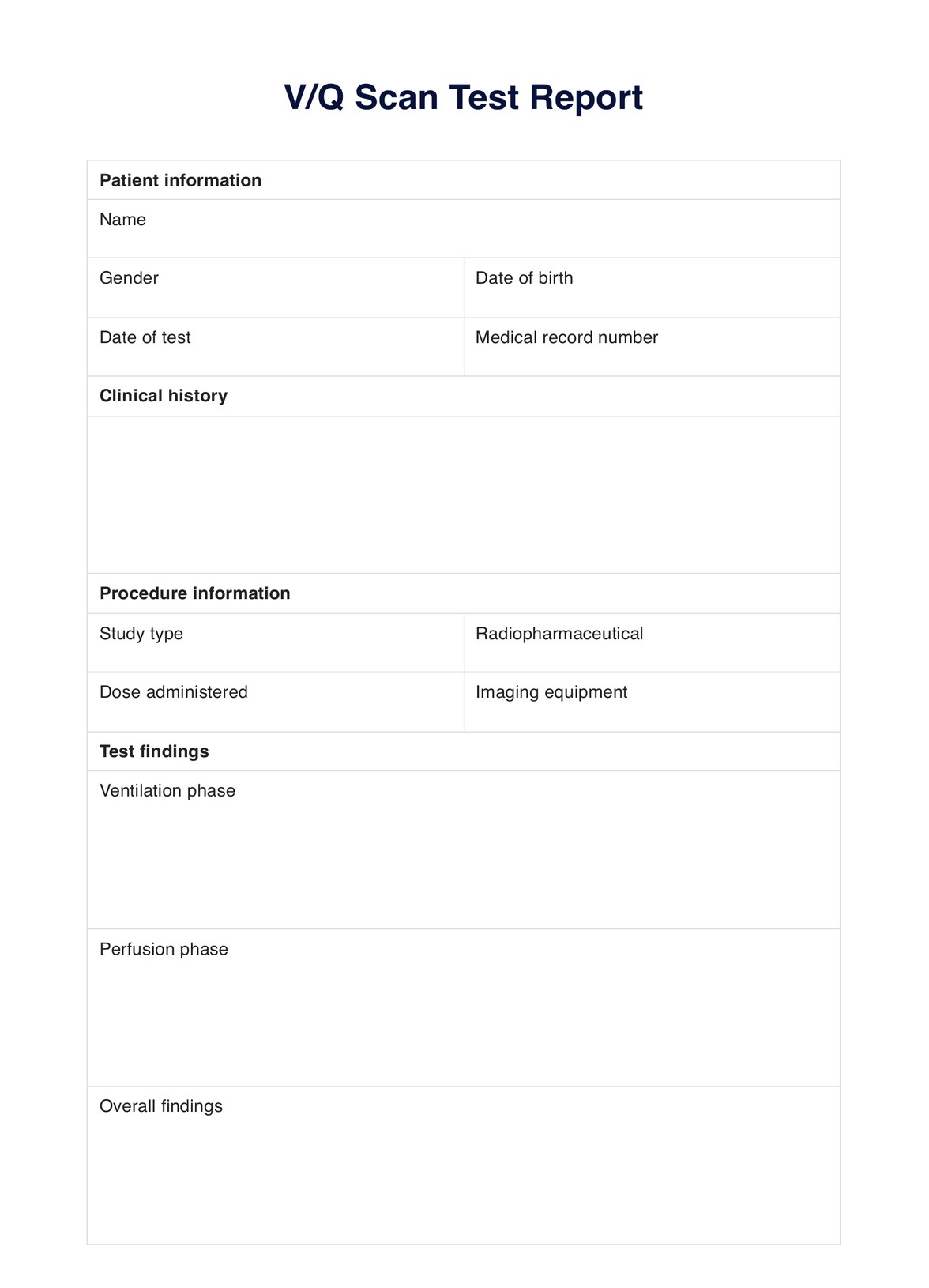Healthcare professionals, such as pulmonologists or cardiologists, may request a V/Q Scan for patients who present with symptoms of lung disease or abnormal blood flow to the lungs. This may include shortness of breath, chest pain, or a history of pulmonary embolism or other lung disorders.

V/Q Scan
Download a free V/Q Scan Test Report template for easy record-keeping. Get an example of a V/Q scan test report to understand the results and procedure.
V/Q Scan Template
Commonly asked questions
The V/Q Scan typically takes 30 to 45 minutes, including preparation time. However, the exact duration may vary depending on each patient's specific circumstances and the type of scanner used. Your healthcare provider will provide you with more specific information before your appointment.
V/Q Scans are commonly used to diagnose and monitor conditions such as pulmonary embolism, chronic obstructive pulmonary disease (COPD), lung cancer, and other lung disorders. They may also be used to assess blood flow and oxygen supply in the lungs before and after surgery or to evaluate the effectiveness of specific treatments.
EHR and practice management software
Get started for free
*No credit card required
Free
$0/usd
Unlimited clients
Telehealth
1GB of storage
Client portal text
Automated billing and online payments











